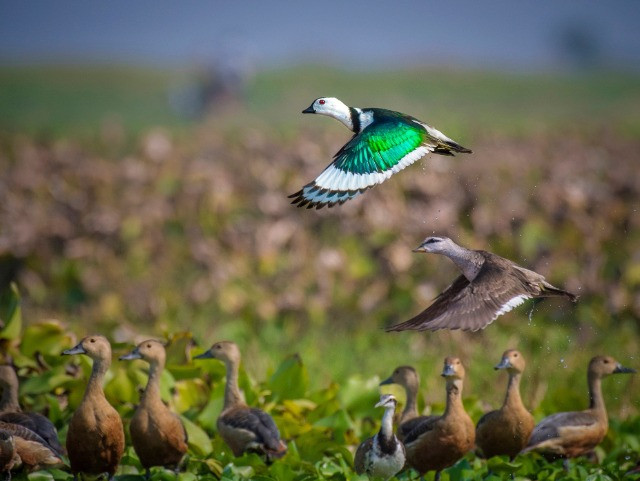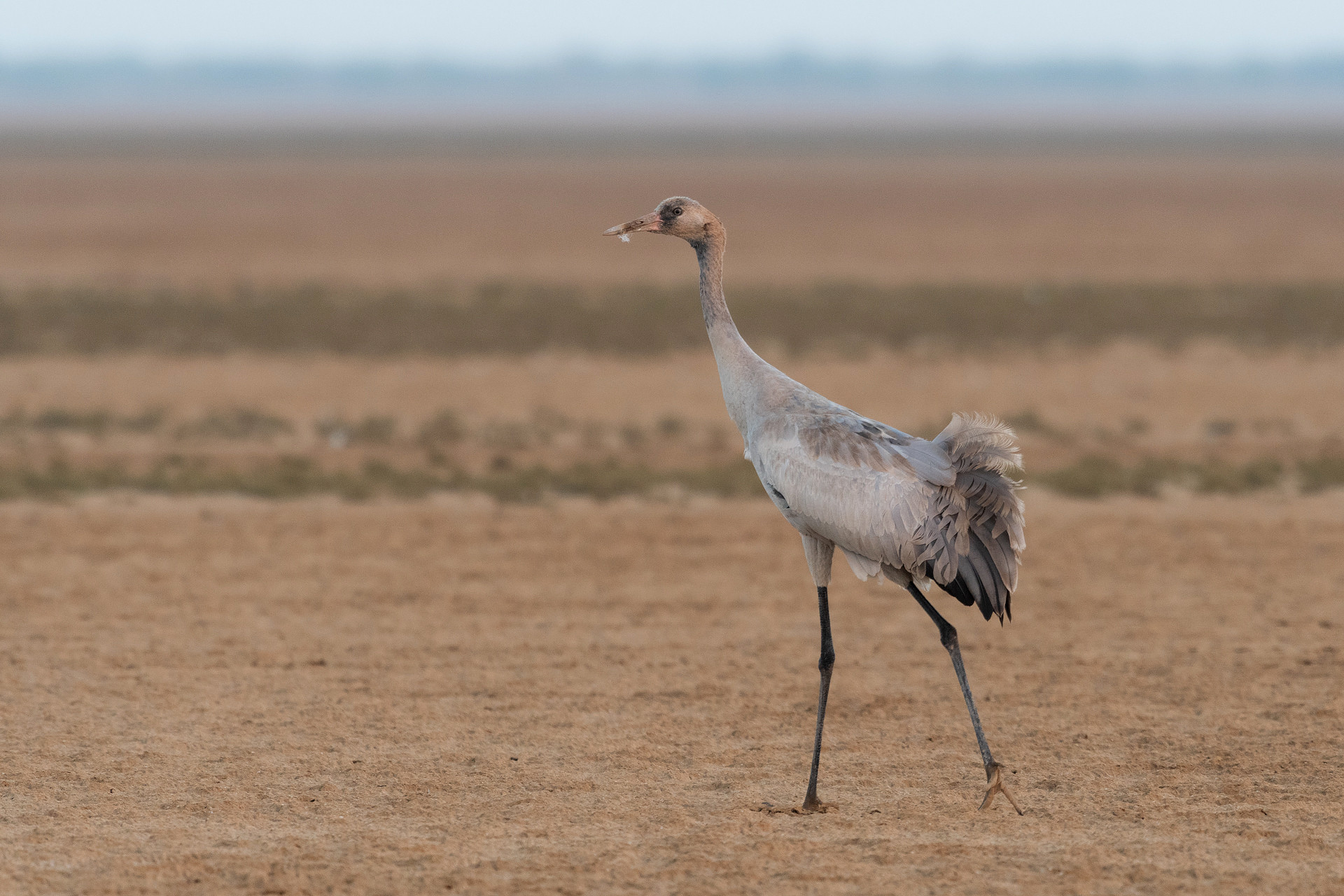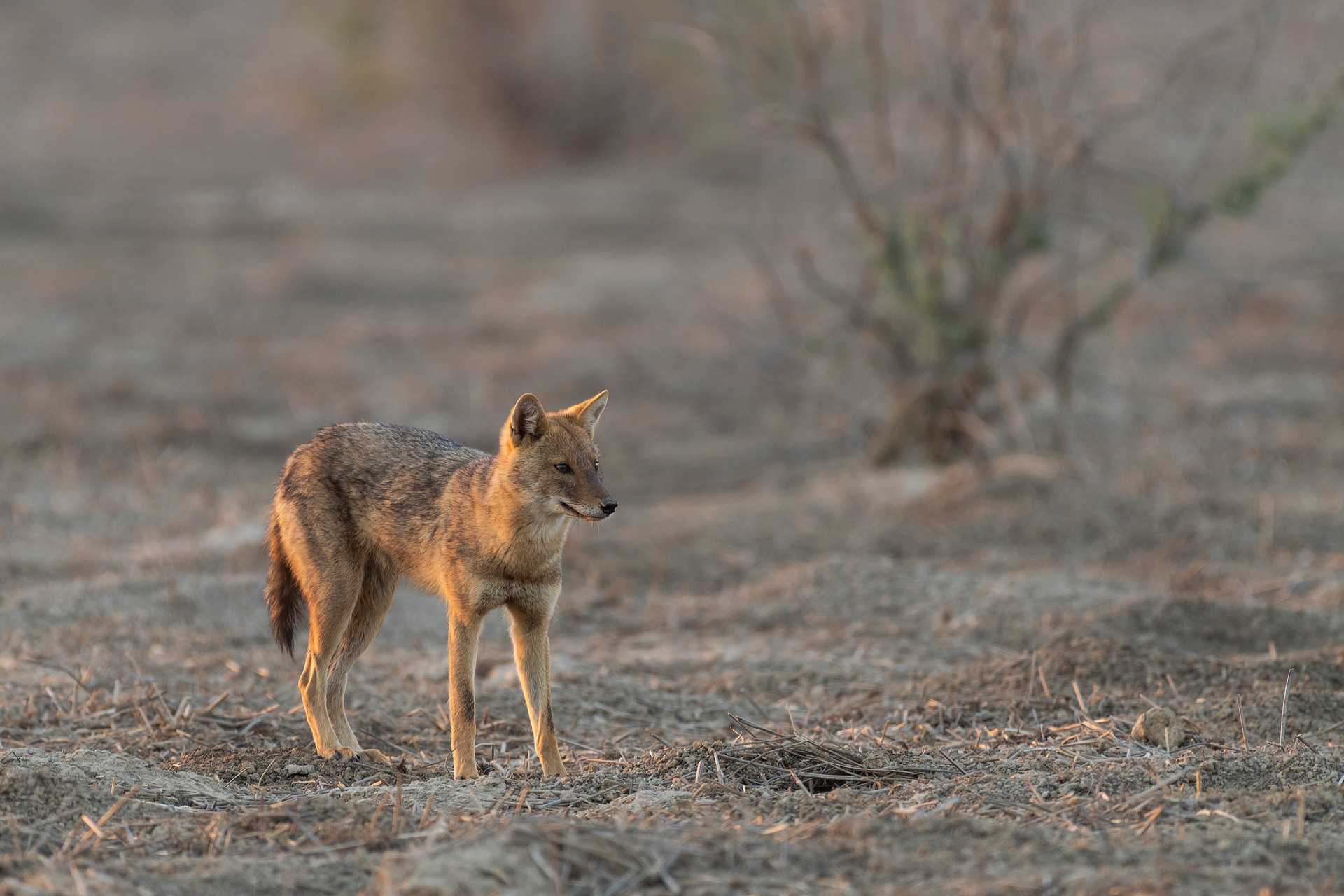On February 2, 1971, the Convention on Wetlands of International Importance was held in Ramsar, Iran. Every year, World Wetlands Day is celebrated on its anniversary. The year 2021 marks the 50th anniversary of the Ramsar Convention, as it is popularly known. Since its inception, World Wetlands Day has evolved into an important movement that creates awareness about the significance of wetlands and the dangers faced by this ecosystem. In the first part of this series on wetlands, we took you through some of India’s better-known wetlands and their avian visitors. Home to more than 67,000 wetlands, India is losing many of them to increasing developmental pressures. Those that continue to remain face threats such as pollution and conversion to agricultural land.
India’s wetlands are spread across 4.1 million hectares and its many states. Today, we shift your focus to the western state of Gujarat, which has the most number of wetlands in the country. Several of these water bodies are present in protected areas such as the Little Rann of Kutch, Porbandar Bird Sanctuary and the Marine National Park. Wetlands in Great Rann of Kutch, Little Rann of Kutch along with Khijadiya Bird Sanctuary, Nalsarovar Bird Sanctuary, Nani Kakrad (Navsari), Pariej Lake, Thol Bird Sanctuary and Wadhwana have been designated as wetlands of national importance for the implementation of National Wetland Conservation Programme. Together with the rest of the state’s wetlands, these water bodies house many rare and threatened flora and fauna including birds like the Marbled Teal and Greater Flamingo, which is the state bird of Gujarat.
Every year, our community of photographers from the state share thousands of images of the wetlands of Gujarat, giving us a peek into the biodiversity these water bodies support and the issues they encounter. We reached out to some of them for this story, and they graciously contributed to it. Hop on for a virtual ride through the jewel of western India – the state of Gujarat.
1 – Chhaya Rann, Porbandar
The old port city of Porbandar receives about 28 inches of rain annually. This helps the growth of algae in the city’s wetlands, including the Chhaya Rann marsh grounds. These salt-rich urban marshes attract migratory Lesser Flamingos which feed on diatoms and other blue-green algae. To photograph the birds without causing them any disturbance, one has to stealthily crawl through the marsh’s mud and undergrowth. These adventures usually unfold on chilly winter mornings, when the marshlands are even more forbidding. Day by day, the increasing urbanisation is affecting the flamingo populations in the region, and the birds are also on the lookout for a better home as evidenced by their reduced numbers.
Seen Often: Lesser Flamingo, Common Pochard, Oriental Darter, Dalmatian Pelican, Black-headed Ibis, River Tern
Seen Rarely: Pacific Golden Plover
2 – Nalsarovar Bird Sanctuary, Ahmedabad
The Nalsarovar Bird Sanctuary is one of the largest wetland bird sanctuaries in India and was designated as a Ramsar site on 24 September, 2012. It is situated near a village called Sanand, about 60km from Ahmedabad. The wetland is home to lakhs of migrant waterfowl during winter and thousands of resident birds and mammals around the year. There are also many shallow-water marshes and ponds on the outer fringes of Nalsarovar which attract waders. Nalsarovar is managed by the Forest Department, and a census for the birds is conducted every second year. The wetland provides an ideal habitat and an abundance of food sources for these birds, which is why they thrive well here. The Forest Department has also taken care to monitor the behaviour of birds and has plans to impose a ban on boating inside the lake during the flamingo breeding season.
Seen Often: Common and Demoiselle Crane, Greater and Lesser Flamingo, Bar-headed Goose, Greylag Goose, Greater and Lesser White-fronted Goose, Collared Pratincole, Red-necked Falcon, Sarus Crane, Eurasian Hobby, Common Ringed Plover, pochards, teals, ducks
Seen Rarely: Little Bittern, Red-breasted Goose, Namaqua Dove, Red-necked Phalarope, Red Phalarope, Red-crested Pochard, Falcated Duck, Red-naped Shaheen, Sociable Lapwing, Little Crake, Saker Falcon, Bimaculated Lark
3 – Thol Bird Sanctuary, Mehsana
First constructed as an irrigation tank in 1912, the lake was declared as the Thol Bird Sanctuary in 1988. Thol is located in the Mehsana district, about 28km from Ahmedabad. The freshwater lake is surrounded by marshes, providing an ideal habitat for birds, of which a majority are waterfowl. Most photographers and birders visit the wetland during winter when the water levels are high. Gum Arabic trees near Thol lake attract a variety of flycatchers, warblers and other passerines. After spring, the water level recedes, and the lake turns into a mudflat where one can spot many species of waders. Thol Bird Sanctuary is a popular tourist destination and often gets crowded. Many visitors tend to leave litter behind and disturb the birds in the vicinity. They need to be more mindful of their activities.
Seen Often: Greater Flamingo, Great White Pelican, Whistling Teal, cranes, ducks and many species of waders
Seen Rarely: Lesser White-fronted Goose
4 – Pariej Lake, Kheda
Pariej is situated in the Kheda district of Gujarat, about 80km from Vadodara. Diverse migratory and non-migratory birds draw photographers and birdwatchers from all over the country to this tranquil lake. There are numerous other lakes around Pariej which also provide suitable habitats for the birds. The wetland is home to India’s only resident crane species, the Sarus Crane. More than 120 species of birds have been recorded around Pariej. Although major developmental activities have not impacted the wetland, sand mining around the area is a growing concern.
Seen Often: Sarus Crane, Greater and Lesser Flamingo, pelicans, bitterns, warblers, geese, ducks and vultures
Seen Rarely: Long-billed Vulture, White-rumped Vulture
5 – Bajana, Little Rann of Kutch
Bajana is located about 100km from Ahmedabad, at the entry point to the Little Rann of Kutch. The flatland, which is a saline desert most of the year, transforms into a wetland during the monsoons. Situated right next to the Indian Wild Ass Sanctuary, the Bajana creek attracts a large variety of birds. In fact, it is the hottest birding spot for flamingos in the country. The Nawa Talaab, which is another water body close to Bajana, is also a popular destination for birds. Bajana is one of the few wetlands that has not been impacted by developmental activities.
Seen Often: Greater and Lesser Flamingo, Northern Shoveler, Greylag Goose, Bar-headed Goose, Pied Avocet, Marsh Harrier, Montagu’s Harrier, Greater Spotted Eagle and pelicans
Seen Rarely: Black-necked Stork
Here is a travel guide to help you plan a trip to the Little Rann of Kutch.
You may also like to read
6 – Avaniya Lake, Bhavnagar
Located 198km from the state capital, in Bhavnagar, the wetlands around Avaniya Lake and along the salt pans are home to a plethora of water birds, particularly flamingos, godwits, stints, plovers and pelicans. Bhavnagar also has numerous little ponds that provide suitable nesting sites for birds like herons, cormorants, coots, and ducks. Flamingos are a common sight near the port of Bhavnagar. The lake ecosystems here are greatly affected by anthropogenic pressures, due to the growing population and the accompanying development of industries and agriculture.
Seen Often: Greater and Lesser Flamingo, Painted Stork, Eurasian Spoonbill, Northern Shoveler, Common Pochard, Common Teal, cormorants, coots, stilts, plovers, pelicans, pintails and various species of raptors
Seen Rarely: Indian Skimmer, Eurasian Hobby, Pallid Scops-Owl, White Stork, Sirkeer Malkoha, Blue-tailed Bee-eater, Bar-headed Goose, Greater White-fronted Goose and vultures
7 – Gatehara, Ahmedabad
Gatehara is a shallow water body in a low-lying area located about 20km from Ahmedabad. The popular Thol Bird Sanctuary is only about 24km from Gatehara. The tiny wetland cannot be compared to Thol, but it provides ample opportunities to observe birds in their natural habitat, against the backdrop of scenic villages. Because the lake is located in a low-lying area, industrial wastewater accumulates here. As you approach Gatehara from the main road, the foul smell of the wastewater is hard to miss. The local residents look out for their avian visitors, and villagers help in spotting birds and photographing them. The green pastures around the water body are a sight for the eyes. Gatehara truly deserves better and is neglected by the forest department and other local agencies. This hidden treasure will soon be lost otherwise.
Seen Often: Greater and Lesser Flamingo, Grey-headed Swamphen, Eurasian Spoonbill, Glossy Ibis, Little-ringed Plover, Greater Painted-snipe, Common Snipe, Common Greenshank, Purple Heron, Indian Peafowl, sandpipers, bulbuls and sunbirds
Seen Rarely: Indian Courser, Egyptian Vulture, Golden Jackal
8 – Karai, Gandhinagar-Ahmedabad
Karai is a small village close to the Gandhinagar-Ahmedabad border. Situated on the banks of the Sabarmati river, the Karai canal wetland area is a haven for birders and bird photographers. One can easily sight a variety of species of ducks, waders, herons, egrets, storks and a few raptors as well. The best time to visit Karai is between December and April. Sadly, the region is plagued by sand mining issues. Developmental activities are also slowly transforming the wetland; the most recent one being the construction of a bridge between the Karai and Koba villages.
Seen Often: Ruddy Shelduck, Pheasant-tailed Jacana, Small Pratincole, Common and Pied Kingfisher, Grey-headed Swamphen, Eurasian Spoonbill, Glossy Ibis, Little Ringed Plover, Greater Painted-Snipe, Common Snipe, Purple Heron, Yellow Bittern, cormorants and sandpipers
Seen Rarely: Pacific Golden Plover, Terek Sandpiper, Cotton Pygmy Goose, Peregrine Falcon
9 – Dhichada Lake, Jamnagar
Dhichada Lake is a small wetland situated near the Bedi Port at Jamnagar. It is surrounded by a few small industries, residential areas, and a busy road. The lake is a shallow water body where rainwater accumulates and stays till late winter. A hub for waterfowl, both migratory and resident, Dhichada provides ample opportunities to photograph these birds up-close – action shots or mere portraits. The wetland is a popular destination for observing the endangered Indian Skimmer. Alas, the region is under pressure from human activities, and since it is not a protected area, the lake is slowly but steadily encroached upon. Recently, a garbage dumping site has cropped up on one of its banks.
Seen Often: Black-necked Stork, Greater and Lesser Flamingo, Great White and Dalmatian Pelican, Painted Stork, Eurasian Spoonbill, gulls, terns and some species of raptors and waders
Seen Rarely: Common Ringed Plover, Osprey
10 – Wadhwana Lake, Vadodara
A favourite destination for people living in the nearby city of Vadodara, Wadhwana Lake is the perfect place to kindle a hobby in photography or to learn about birds. Wadhwana is spread over two kilometres, and the lake is a vital source of water for about 20 villages in the surrounding area. Apart from the lake itself, photographers also have the opportunity to capture images in the fields around Wadhwana. Several bird species can be found in these agricultural patches. The development of guest houses near the entrance of the lake is a looming threat to the birds in the region. The visitors here need to be educated about the lake's significance and how their activities can harm the birds.
Seen Often: Common Coot, River Tern, Ruddy Shelduck, Asian Openbill, Northern Shoveler, Bar-headed Goose, Green Bee-eater, Common Hoopoe, Grey-headed Swamphen, Osprey, cormorants, herons, ibises, jacanas, egrets
Seen Rarely: Greater White-fronted Geese
11 – Gavier Lake, Surat
A vital source of water for villages in the vicinity, Gavier Lake is located about 7km from the city of Surat. Several housing colonies have come up in the lake's surroundings, drastically altering the ecosystem. Two decades ago, the region was dotted with private farms which housed a wide variety of migratory and non-migratory birds. With increasing development, the scenario is fast-changing, and the birds have limited access to their habitats. Environmentalists and communities like the Surat Nature Club are trying their best to protect what is left of the lake and its surroundings.
Seen Often: Bronze-winged Jacana, Pheasant-tailed Jacana, Purple Heron, Red Avadavat, Black Drongo, Clamorous Reed Warbler, Golden Oriole, Indian Peafowl, Indian Paradise Flycatcher
Seen Rarely: Smooth-coated Otters
12 – Chhari-Dhand, Great Rann of Kutch
Chhari-Dhand Wetland Conservation Reserve is located in the Banni grasslands of the Rann of Kutch. Thousands of migratory and resident birds call this wetland home. Several hills surround this wetland, the most popular being Kiro hill. The wetland comes alive after a good monsoon when large flocks of migratory birds arrive here. Although birds are the major attraction of Chhari-Dhand, one should also keep a wide-angle lens handy as the place provides excellent opportunities to capture stellar landscape images. A large number of windmills have been installed on the hills around Chhari-Dhand which pose a significant threat to the birds here.
Seen Often: Steppe Eagle, Imperial Eagle, Greater Spotted Eagle, Short-eared Owl, Grey Hypocolius, Red-tailed Wheatear, Cream-coloured Courser, Sociable Lapwing, Pallid Harrier, Montagu's Harrier, Long-legged Buzzard
Seen Rarely: Trumpeter Finch, Red-tailed Wheatear, Pale Rock Finch, European Nightjar
Here is a travel guide to help you plan a trip to the Great Rann of Kutch.
The team wishes to thank Manish Vaidya and Ravi Patel for their inputs.


























